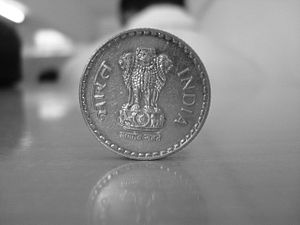In any mature democracy, parliament is a forum for resolving issues through dialogue. However, if elected leaders resort to filibustering and frequent disruptions of the house, many crucial decisions that have direct bearing on the well-being of the general public get delayed, apart from causing huge losses to the exchequer. In one of the most notable examples, the Goods and Services Tax (GST) Act was left languishing in the Indian Parliament for over a decade, mainly due to the sharp divide between two of India’s largest parties, the Congress and the Bharatiya Janata Party (BJP). Ironically, the BJP, which had vehemently opposed the bill during the Congress regime, now needed the opposition’s help in passing the bill.
According to an estimate, the total loss of not transacting business in the Indian Parliament during the last monsoon session was nearly 360 million rupees (around $5 million) and similar losses occurred during the winter session due to a dysfunctional parliament. Over the last five years, more than 3 billion rupees ($45 million) have been lost due to frequent disruptions in both the houses. Such disruptions do not reflect well on the world’s largest democracy.
It was, therefore, refreshing to see all the MPs, cutting across party lines, unanimously pass the GST Constitutional amendment in both houses of parliament, paving the way for the introduction of the final two GST-related bills in October or November of this year. This important legislation will have far-reaching ramifications for the Indian economy when it is implemented next year. The GST aims to radically overhaul India’s tax system by ultimately replacing national, state, and local taxes with a new unified value-added tax, improving the country’s competitiveness and boosting growth. If implemented successfully, it will not only improve the ease of doing business, which in turn will attract foreign direct investment to the country, but it will increase the GDP of the country by between 1.5 to 2 percentage points.
The Goods and Services Tax (GST) is based on the “destination principle,” meaning it will apply to goods and services at the place where final consumption happens. The GST will be collected on value-added goods and services at each stage of sale or purchase in the supply chain. However, the GST will allow the manufacturer or retailer, who is required to pay the tax, to claim a tax credit so that the consumer, as the last person in the supply chain, is the one who will have to ultimately to bear the tax. The consumer also stands to benefit, however, as this single tax would replace many prevailing cascading taxes, leading to an ultimately lower tax rate.
The Government of India had formed an expert committee to suggest tax rates that will benefit both the center and the states. As per the “Report on the Revenue Neutral Rate and Structure of Rates for the Goods and Services Tax (GST)” published in December 2015, a four-band tax structure has been recommended: zero percent for essentials, 12 percent for “merit” goods consumed mostly by poorer people, a standard rate of 17-18 percent, and 40 percent for luxury goods. The GST will not cover alcohol and petroleum products, but the states have been given the rights to set their own rates on such high-revenue items.
The next biggest hurdle for GST will come in the states, as at least 16 state legislatures must also ratify the new GST Constitutional amendment. Then the Central GST and Interstate GST bills (which will set the actual tax rates) will be presented in the Indian parliament, yet another challenge to be met before the concept of single tax becomes a reality. The opposition parties are demanding a cap of 18 percent on the tax. This will become a contentious issue, as the revenue from taxes goes up to 27 percent in some of India’s states. The single tax will now subsume over 15 different taxes both at the central and state levels, but the GST will lead the government into uncharted territories when it comes to prevalent taxes in states. If the government does not put a cap on the maximum tax rate, the ultimate sufferers will Indian consumers. It is not clear, though, how the central government proposes to compensate states for the loss of tax revenue if it does decide to cap the tax at 18 percent.
India is not known for the effective implementation or execution of laws. Accordingly, the GST project will require a lot of changes at the administrative level, as well as the creation of a sound, integrated IT infrastructure, to ensure the smooth collection of taxes. Moreover, many states with strong manufacturing bases have expressed their reservations over the tax, as it would have a direct impact on their overall revenues. To assuage these concerns, the government has agreed to compensate all the states that stand to lose heavily with the introduction of the GST for at least five years. It is, however, not clear how affected states will manage after the five year period; that question could lead to disputes and conflict between the states and the center.
Despite the many pitfalls that may occur during the implementation of the unified tax, it is earnestly hoped that all the parties, irrespective of their ideological differences, ensure the passage of the GST, both in the state legislatures and in Parliament. India has already lost over 10 years by delaying passage of the bill. The foot-dragging both dampened enthusiasm from foreign investors and delayed India’s economic reforms. With final implementation so close, now is the time for all political parties to rise to the occasion.
K.S. Venkatachalam is an independent columnist and political commentator. His articles have been featured in many leading newspapers.

































